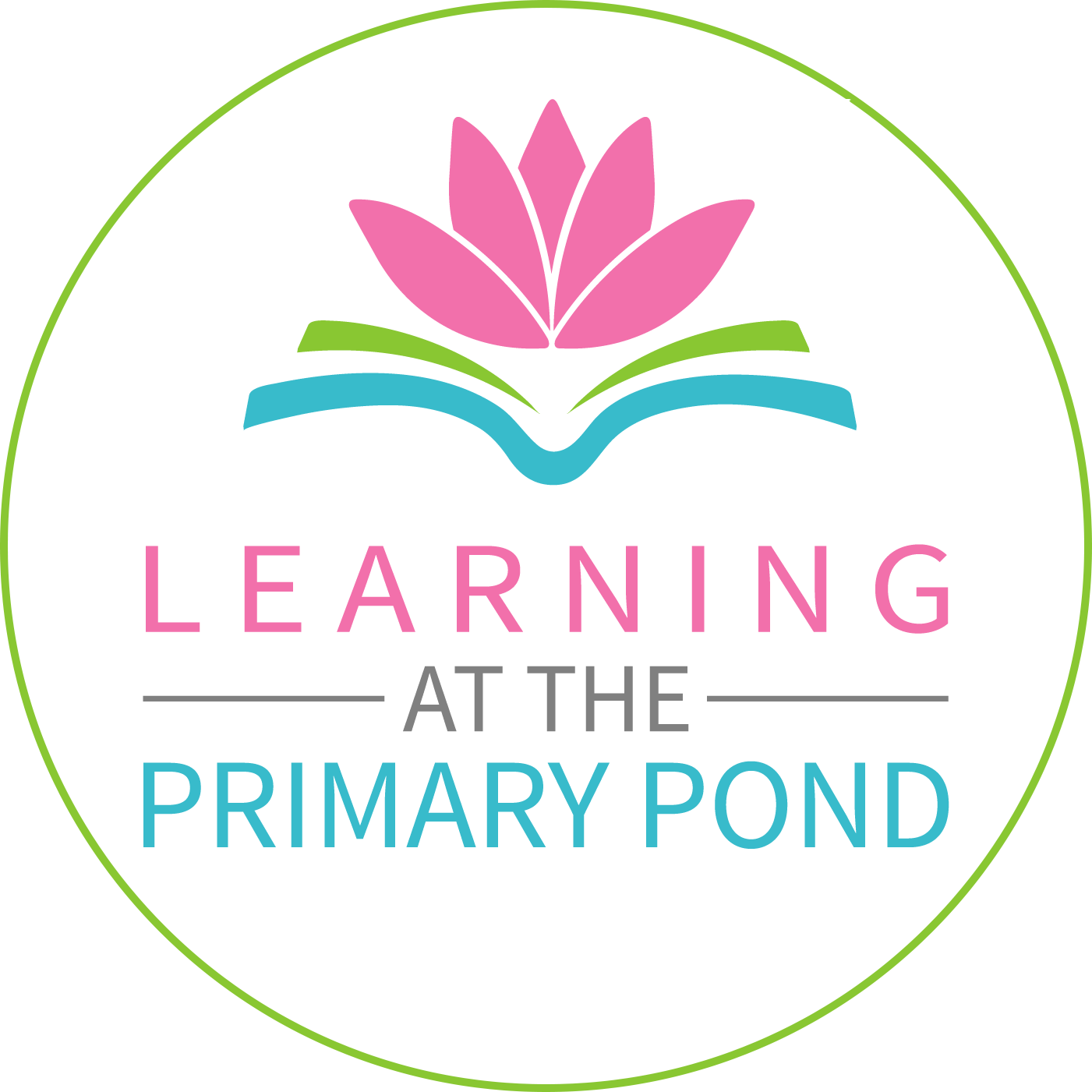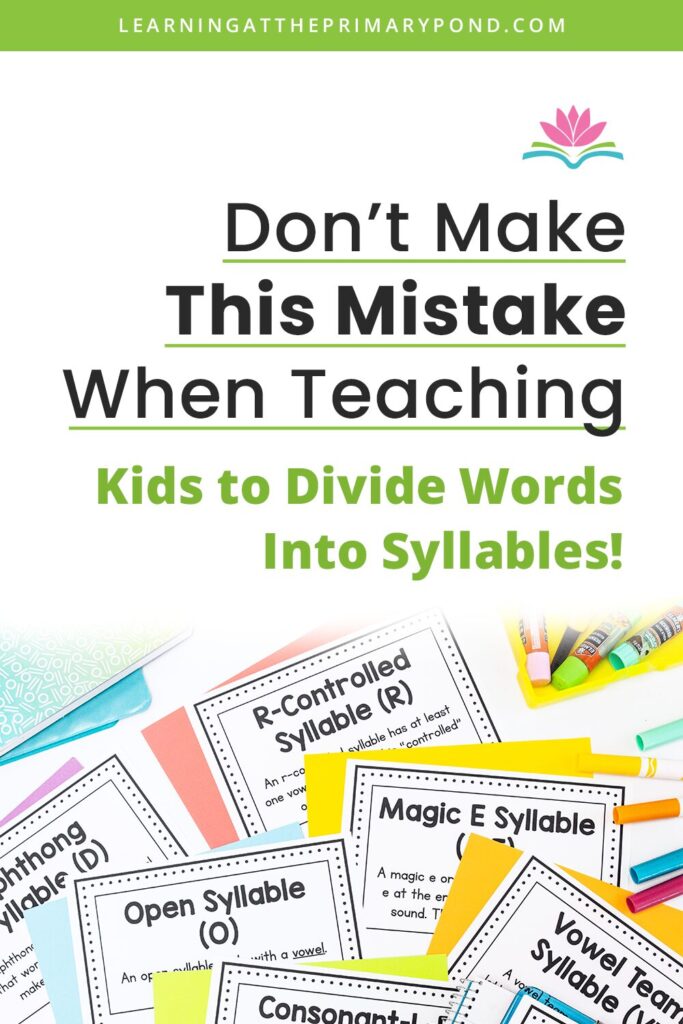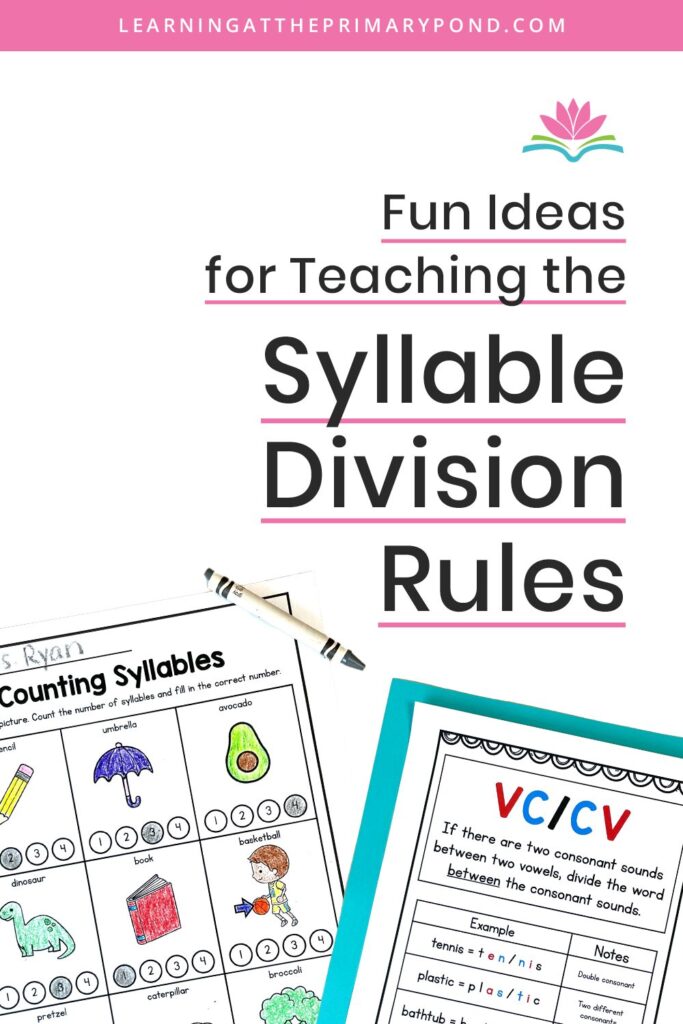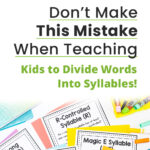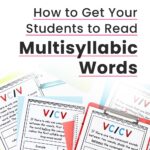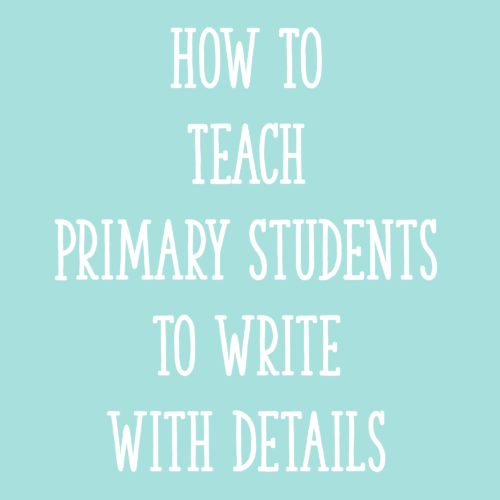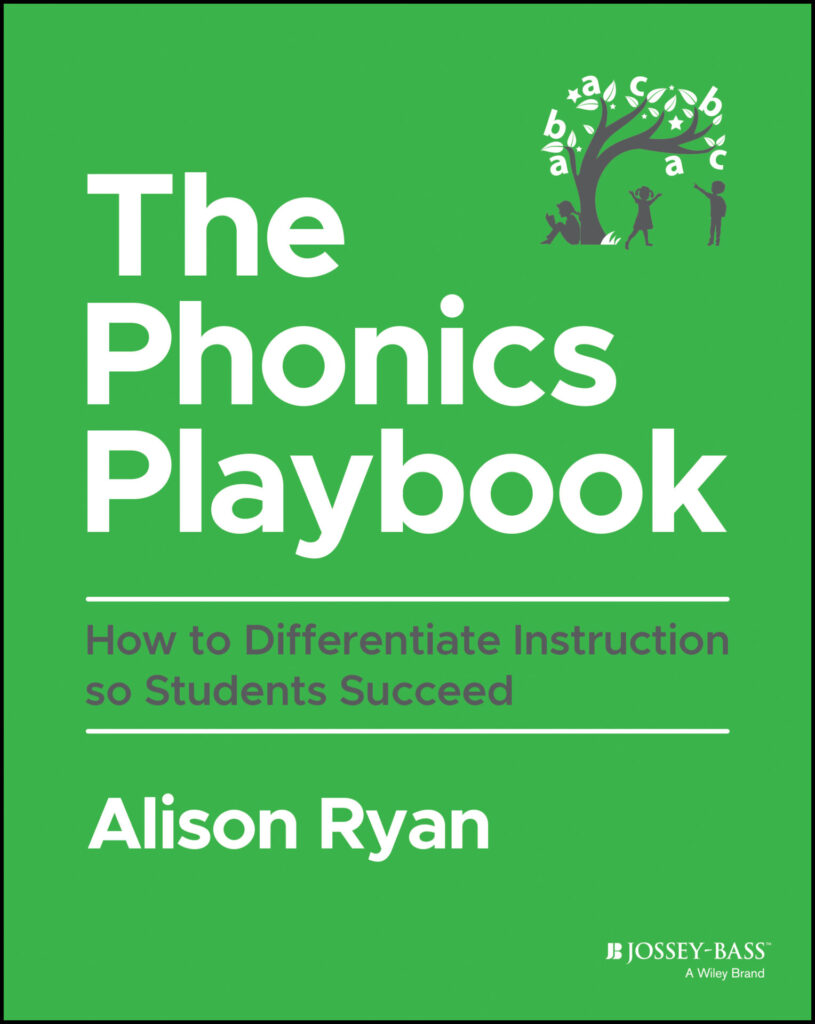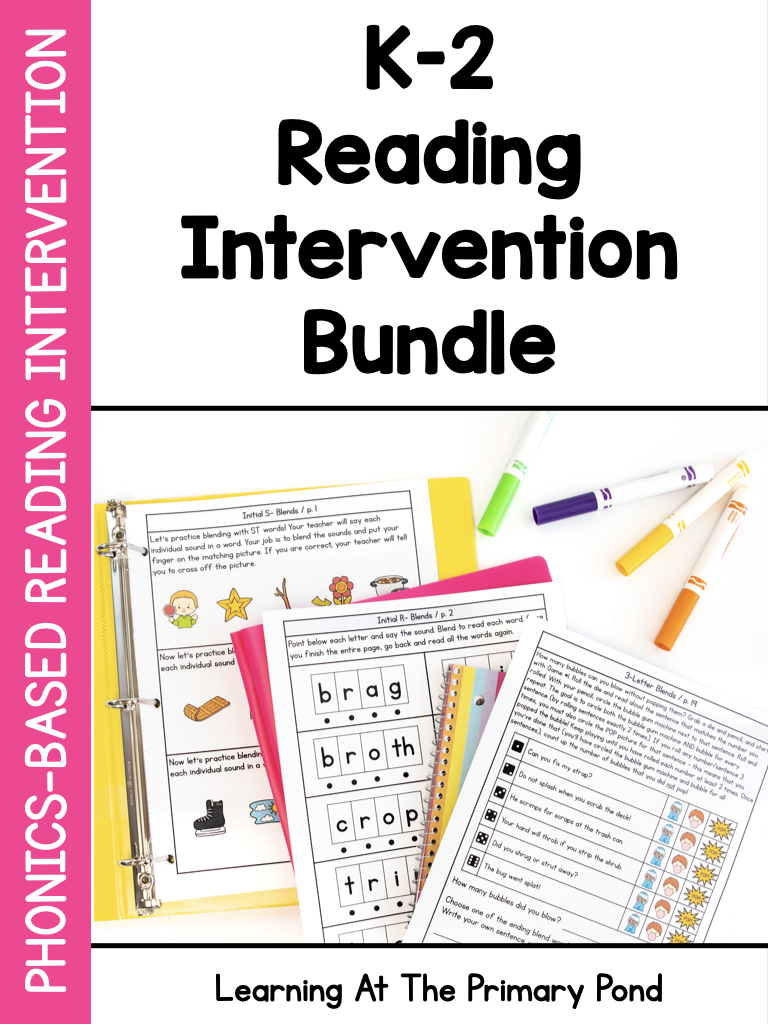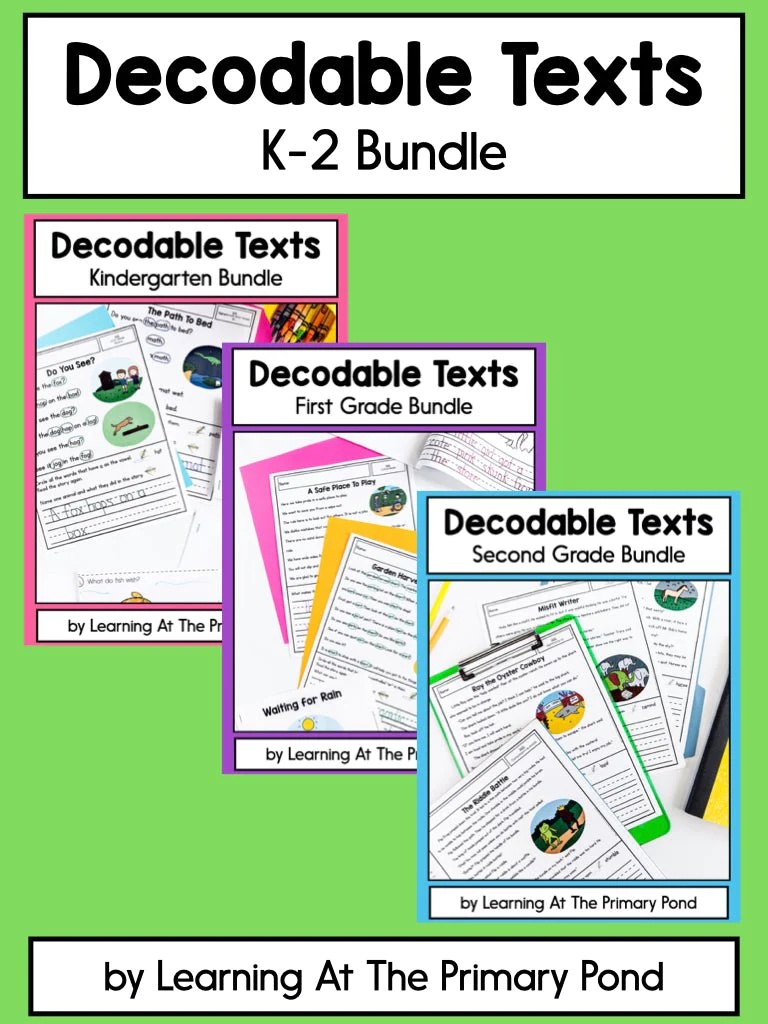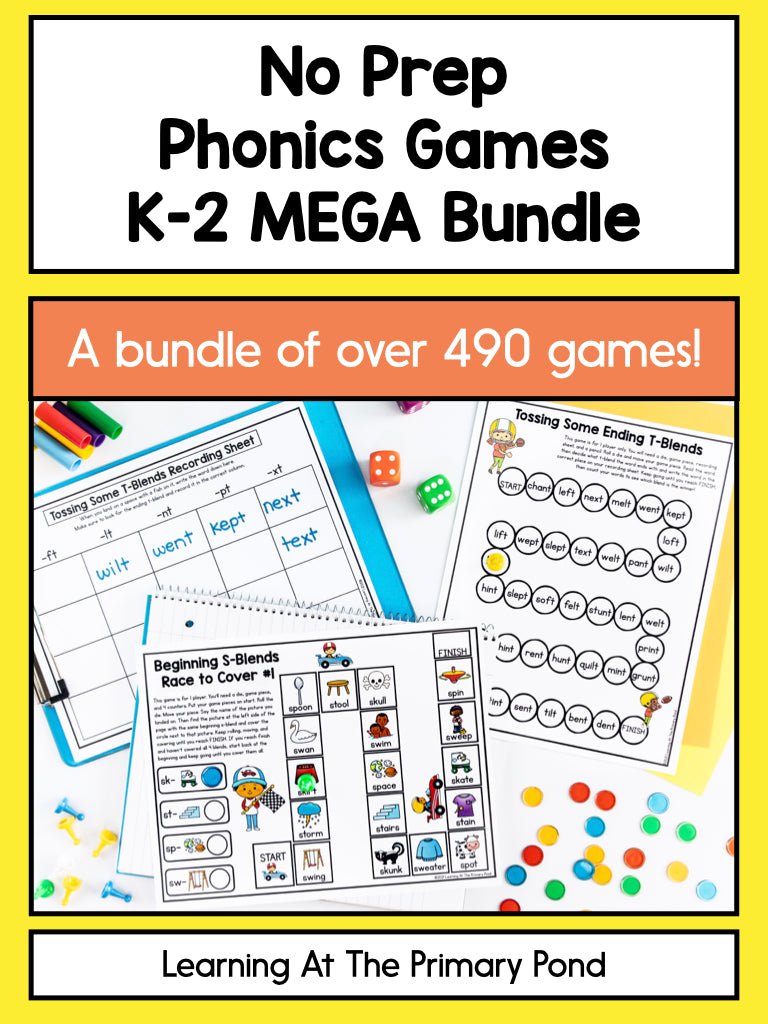As a kindergarten teacher, the phrases “syllable types” or “syllable division rules” were not phrases I used when talking with my students or fellow teachers. In fact, these concepts weren’t even on my radar.
However, when I transitioned to first and second grade, I quickly realized the importance of these topics!
Why did I need to learn these things? Well, even though young learners may not encounter highly complex texts, they encounter many multisyllabic words starting in first grade. And to effectively teach my students how to read and spell multisyllabic words, I needed to master these concepts myself!
When we teach our students the syllable division rules, we teach them not only how to break a word into smaller, more manageable chunks, but we teach them how to predict the sound the vowel makes. This sets students up for success when decoding (reading) and encoding (spelling).
Knowing the syllable types and how to divide words into syllables helps with reading fluency, too. If you recognize the patterns in a word, you will read the words quicker and more accurately.
If you are wondering when, and how, to teach the syllable division rules, I’ve got you covered.
In this blog post, I’ll explain the different syllable types, as well as when and how to teach them. This blog post applies to any teacher who teaches first grade and up!
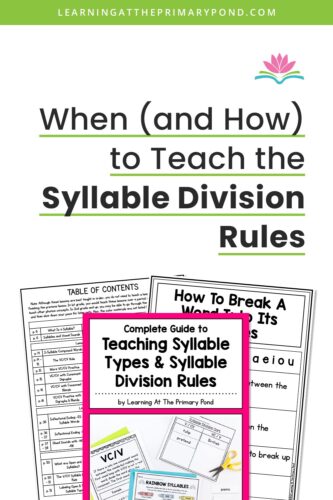
What are the 6 Syllable Types?
There are 6 syllable types in the English language. The 6 syllable types are:
- Closed
- Open
- Vowel-Consonant-E (also known as Magic E or Silent E)
- R-Controlled
- Vowel Team*
- Consonant-L-E
A closed syllable has one vowel followed by one (or more) consonants. The vowel sound is short. Examples of closed syllables include “cat,” “pig,” and “sunset.” Closed syllables can also contain consonant blends or digraphs, such as in the words “sled,” “jump,” and “ship.”
Open syllables contain one vowel that is not followed by a consonant. The vowel sound is long, such as in the words “he,” “go,” and “solo.”
The vowel-consonant-E syllable type, also known as the magic-E or silent-E syllable type, contains one vowel, followed by (typically) one consonant and a silent-E at the end. The vowel makes its long sound. Examples include “line,” “make,” and “lakeside.”
R-controlled syllables contain a vowel immediately followed by the letter “r.” The vowel sound is controlled by the “r” (often called the bossy-r), which creates its own unique sound. Some examples of r-controlled syllables include “car,” “germ,” “short,” “burn,” and “thirty.”
The vowel team syllable contains two vowels side-by-side, which typically make one long sound. Examples include “teach,” “rain,” and “railroad.” There are some exceptions to the vowel team syllable type vowel sound being long, such as in the word “sweat.” We teach these exceptions after we teach the predictable vowel teams.
NOTE: Some programs classify diphthongs as vowel teams, and some label them as a different syllable type. Diphthongs are technically different, as they’re gliding vowels. I usually separate out these two types of syllables.
The consonant-L-E syllable type is always found at the end of the word. It is spelled with a consonant followed by the letter “l” and a silent “e”. All words with this syllable type have at least two syllables. Examples include “bicycle,” “table,” and “puzzle.”
Prerequisites for Teaching Syllable Types & Rules
Before introducing syllable types and division rules, students should have a strong grasp of these foundational concepts:
- Understand the difference between a vowel and a consonant.
- Correctly identify the sounds of all of the consonants and vowels.
- Understand that each vowel has two sounds: short and long.
- Understand the definition of a syllable (a unit of pronunciation that has one vowel sound).
- Understand that all words are made up of syllables, and that all syllables contain at least one written vowel.
- Understand that words can have one, two, three, or more syllables.
Once these foundational skills are in place (typically during first grade), students are ready to learn about syllable types and division rules.
When and How to Teach Syllable Division Rules
The order of introducing syllable types in this post aligns with the recommended teaching order of the syllable types. When you teach your students the different syllable types, you will simultaneously teach them the syllable division rules.
As I explain the syllable division rules, I’ll be using letters to represent the syllable pattern (C = consonants, V = vowels).
When teaching students the syllable division rules, we teach them to circle the vowels and label them with a “V,” and to underline the consonants and label them with a “C.” This will help students visualize the syllable patterns.
Closed Syllables (VC/CV)
Once students are able to accurately decode CVC words, they are ready to learn about closed syllables. This is usually during the first half of first grade.
Begin with simple compound words like “hotdog” and “backpack,” then progress to more complex words such as “napkin,” “rabbit,” and “pretzel.”
To divide simple closed syllable words, we teach students to divide the word between the two consonants.
For example, in the word “rabbit,” the vowel sounds are the short /a/ and the short /i/. We draw a line between the two consonants in the middle of “b” and “b.” This creates two syllables: “rab” and “bit.”
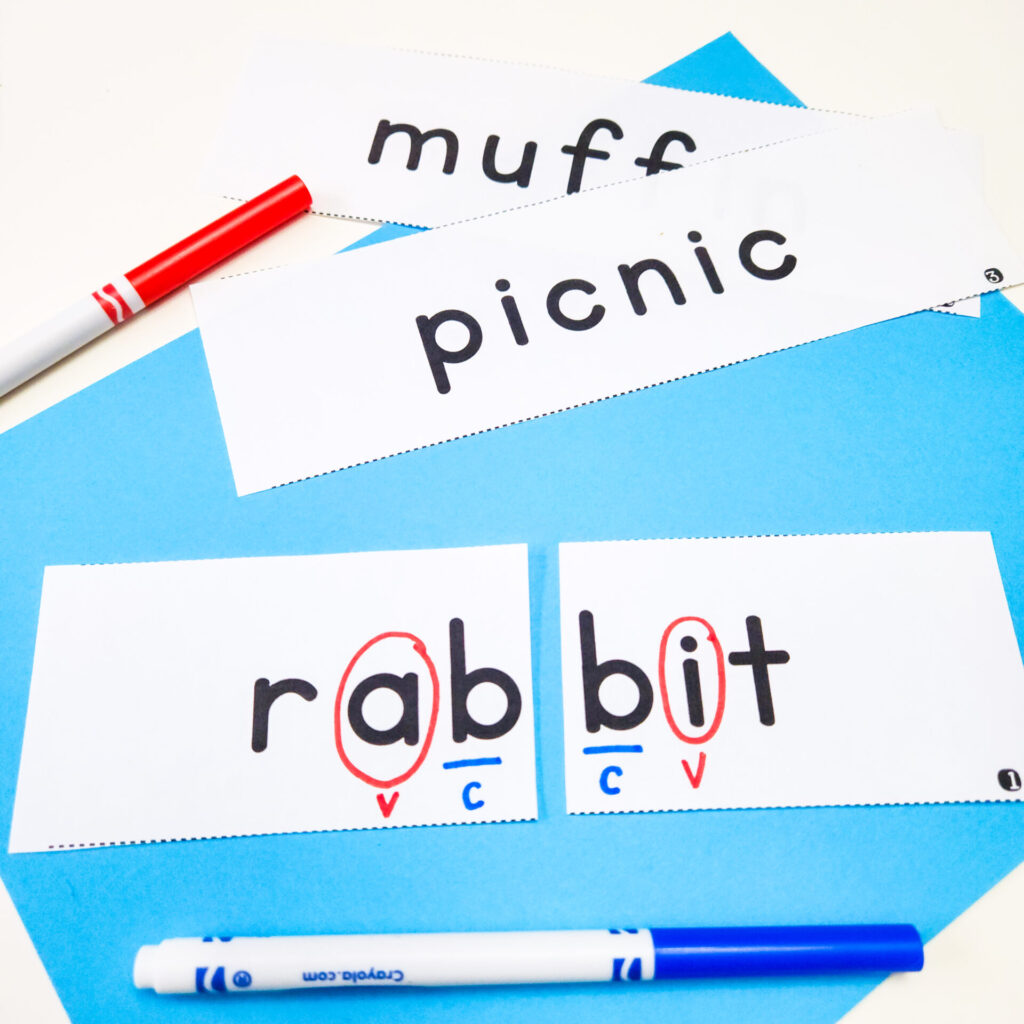
For words that have more than 2 consonants between the vowels, such as the word “dishpan,” we teach students to keep blends and digraphs together. In the word “dishpan,” we would keep the digraph “sh” together, and divide between the “h” and the “p.”
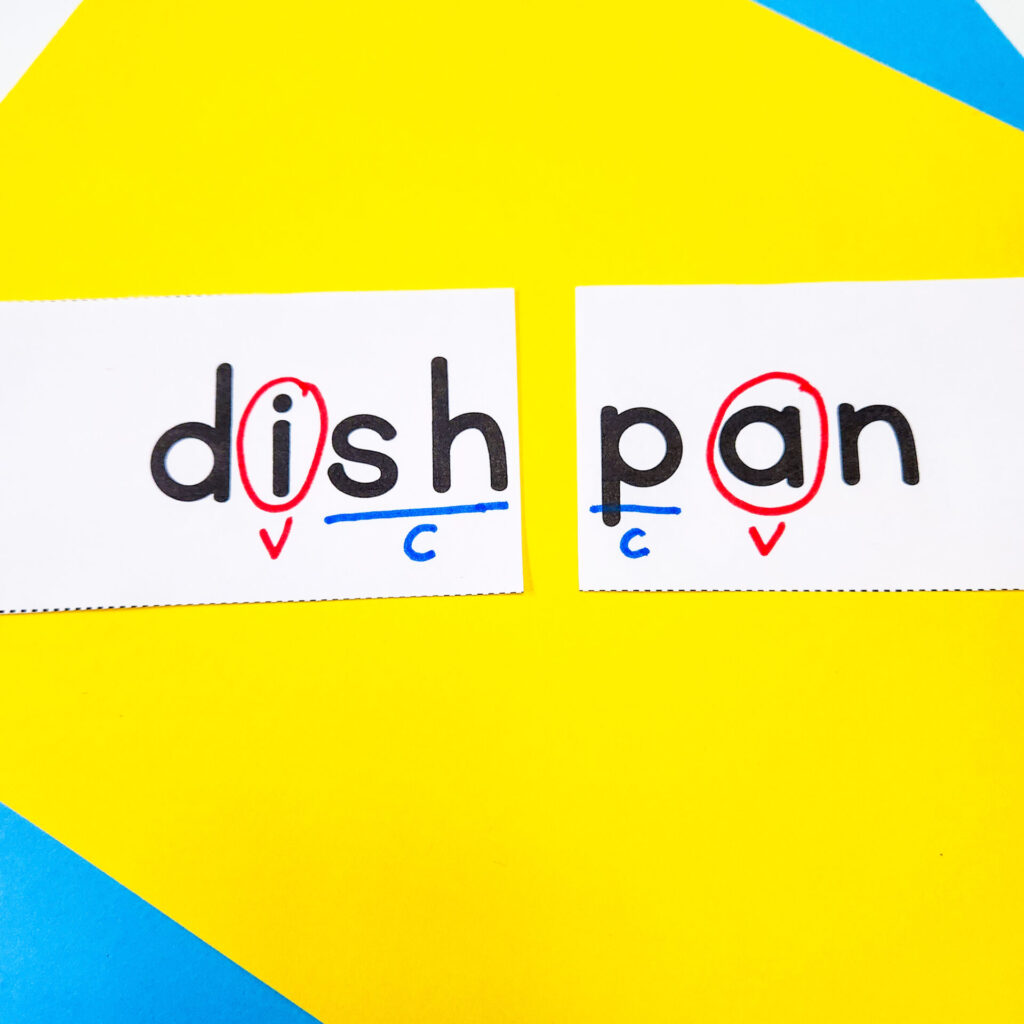
Open Syllables (V/CV, VC/V)
Soon after teaching closed syllables, you can begin teaching open syllables.
We start with words that follow a V/CV division pattern, such as in the word “bacon.”
We follow the same procedure of circling/labeling the vowels and underlining/labeling the consonants. Then, we teach students to divide V/CV words after the first vowel. In the word “bacon,” we would divide before the “c.” This creates an open syllable, “ba,” and the vowel makes its long sound.

After students are successful dividing words following the V/CV division pattern, we teach them the VC/V pattern. This pattern is less common. Teach students to try the V/CV division first; if the word doesn’t sound like a real word they know, instruct them to divide it after the consonant (VC/V).
For example, in the word “comet,” the vowel sound in the first syllable is short (COM – et). Students might initially try V/CV division (CO – met), which would make the vowel sound long. This is where we teach our students to revert to VC/V syllable division. This demonstrates the importance of flexibility in syllable division.

Vowel-Consonant-E Syllables (VCe)
Teach students the vowel-consonant-E syllable type in the second half of first grade. Students should already be familiar with the concept of silent-E before you teach this syllable division rule.
Syllable division rules for the vowel-consonant-E syllable type generally follow the same rules as closed and open syllables. However, we teach students to draw a vertical line through the silent-E within the syllable. This visual cue helps reinforce the concept of the silent-E.
After circling/labeling the other vowels, underlining/labeling the consonants, and drawing a line through the silent-E, students are ready to decode the word!
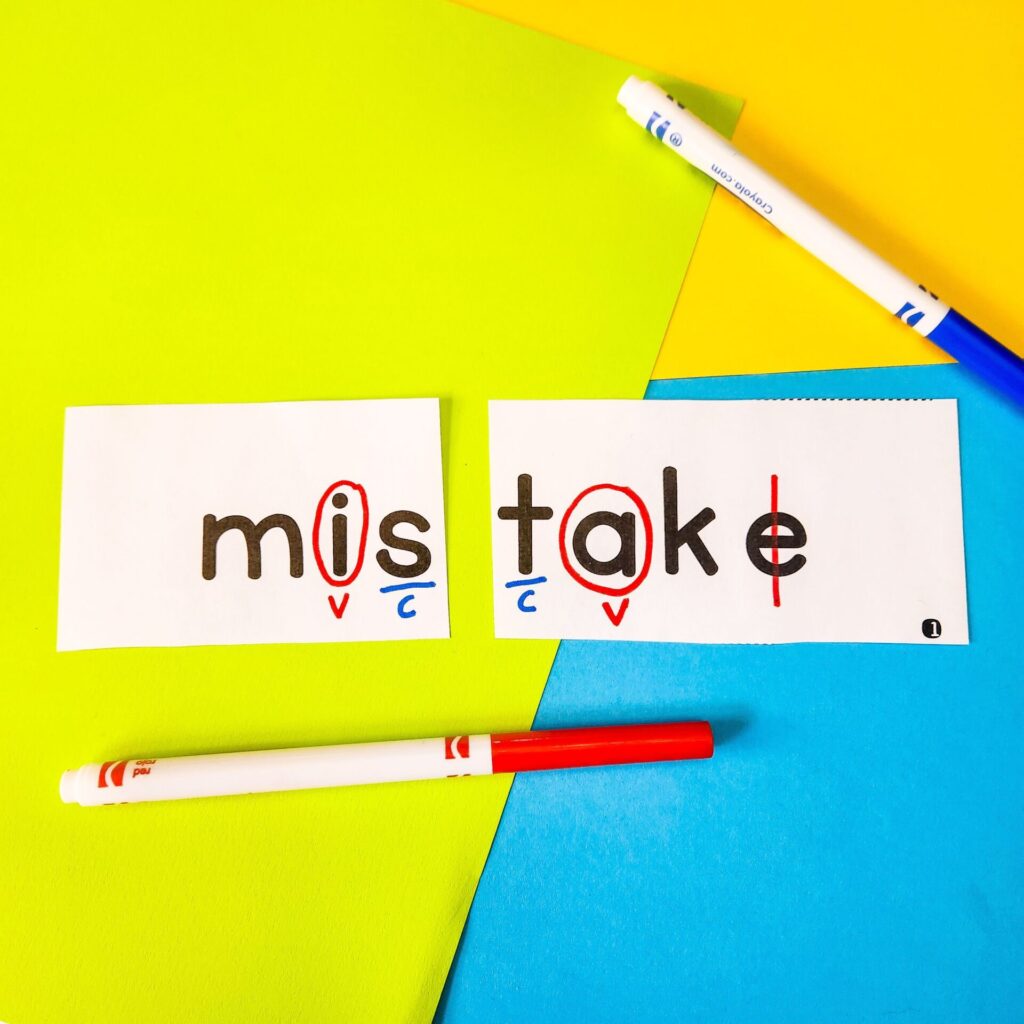
R-controlled Syllable Type
The R-controlled syllable type can be taught either toward the end of first grade or the beginning of second grade.
We first teach students the concept of the “r-controlled” vowel, providing examples of one syllable words with this vowel type. This helps students understand how the “r” influences the vowel sound.
Next, we teach them how to divide words with this syllable type. When dividing words with an r-controlled vowel, we instruct students to circle the letter “r” along with the vowel. We continue to follow the other rules we have taught for labeling the consonants and vowels, as well as breaking apart the syllables.
For example, using the word “carpet,” students circle the vowels “ar” and “e,” and underline the consonant “p.” Students divide the word before the “p.” This creates two syllables: “car” and “pet.”
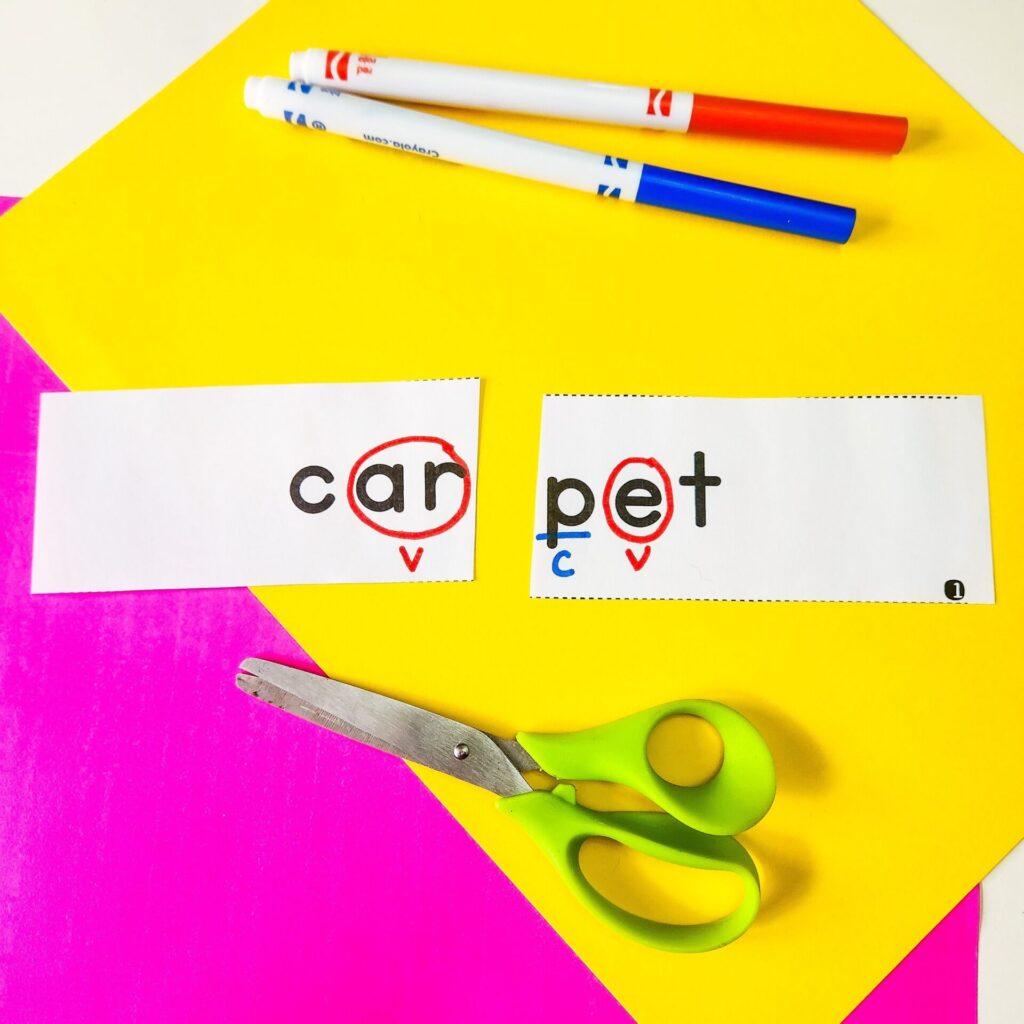
Vowel Team Syllable Type
Students are ready to begin learning about vowel teams towards the end of first grade. There are many different vowel teams in the English language, so depending upon what scope and sequence you are following, you might teach some vowel teams in first grade and the rest during the first half of second grade.
To divide words with the vowel team syllable type, we instruct students to follow all of the syllable division rules they have previously learned, with one new rule. We teach students that when they see two vowels side-by-side, they circle the two vowels together, since they will make one sound (similar to the r-controlled syllable).
Look at this example of how to divide a word with a vowel team:

Consonant L-E Syllable Type
The consonant-L-E syllable type is typically introduced in second grade. As stated earlier in this post, all words that contain this syllable type have at least two syllables. This syllable type is also always found at the end of a word.
When teaching students how to divide a word with this syllable type, we first have them identify the vowels and consonants. Then, we draw their attention to the consonant-L-E at the end of the word, and direct them to divide the word before the consonant-L-E. This creates a separate syllable for the consonant-L-E pattern.
We also instruct students to draw a vertical line through the “e” since it will not make a sound. Below you can see what this looks like using the word “cable.”
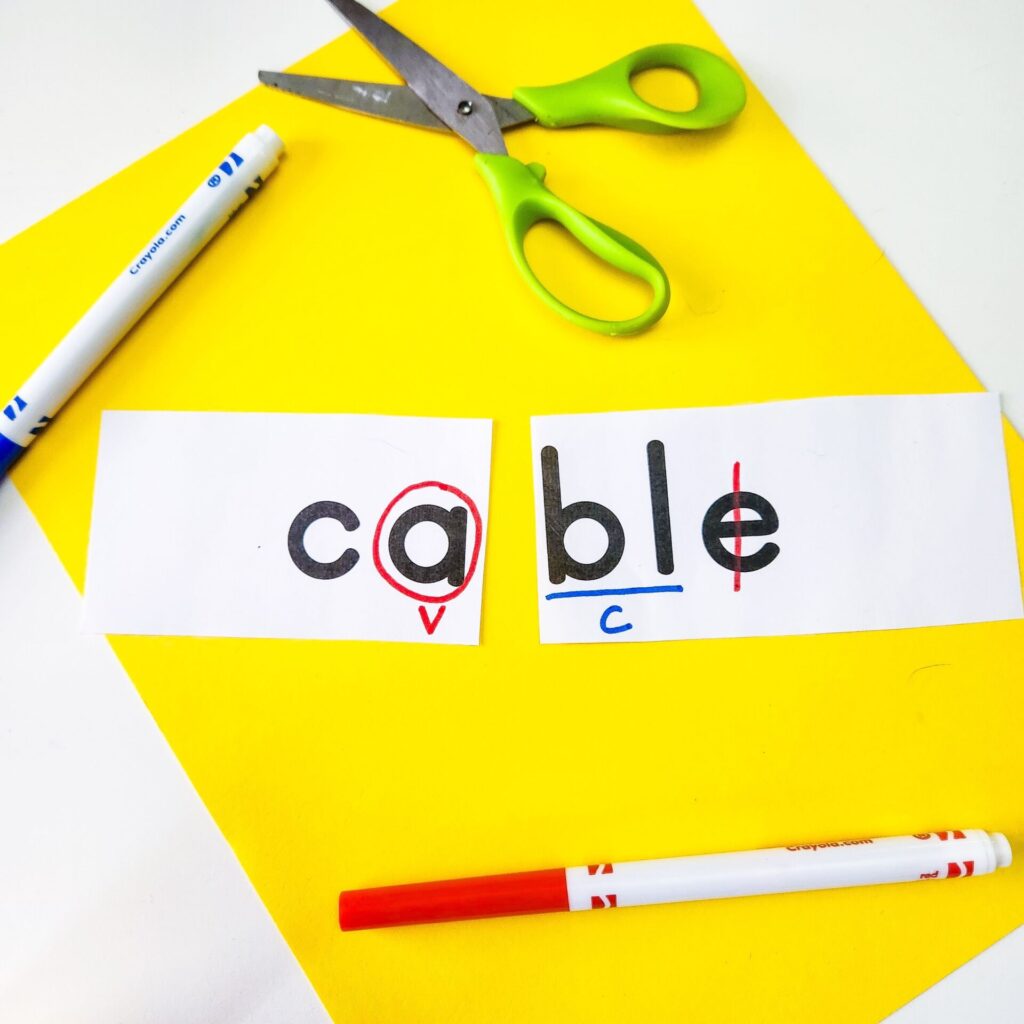
Conclusion
I know that was a LOT of information, but I hope it empowers you to effectively teach your students the syllable division rules!
If you’d like to make teaching the syllable division rules easy for yourself, and fun for your students, check out my Complete Guide to Teaching Syllable Types & Syllable Division Rules.

This resource is designed to complement your existing phonics program. (But if you need a complete phonics program, check out my program From Sounds to Spelling!)
Everything is done for you, so you won’t have to invest time and energy in creating lessons from scratch! The guide includes:
- Comprehensive lesson plans for teaching all of the syllable types and division rules.
- Engaging mini-lessons within each lesson plan.
- Practice words for students to divide syllables.
- Hands-on games and activities to reinforce learning.
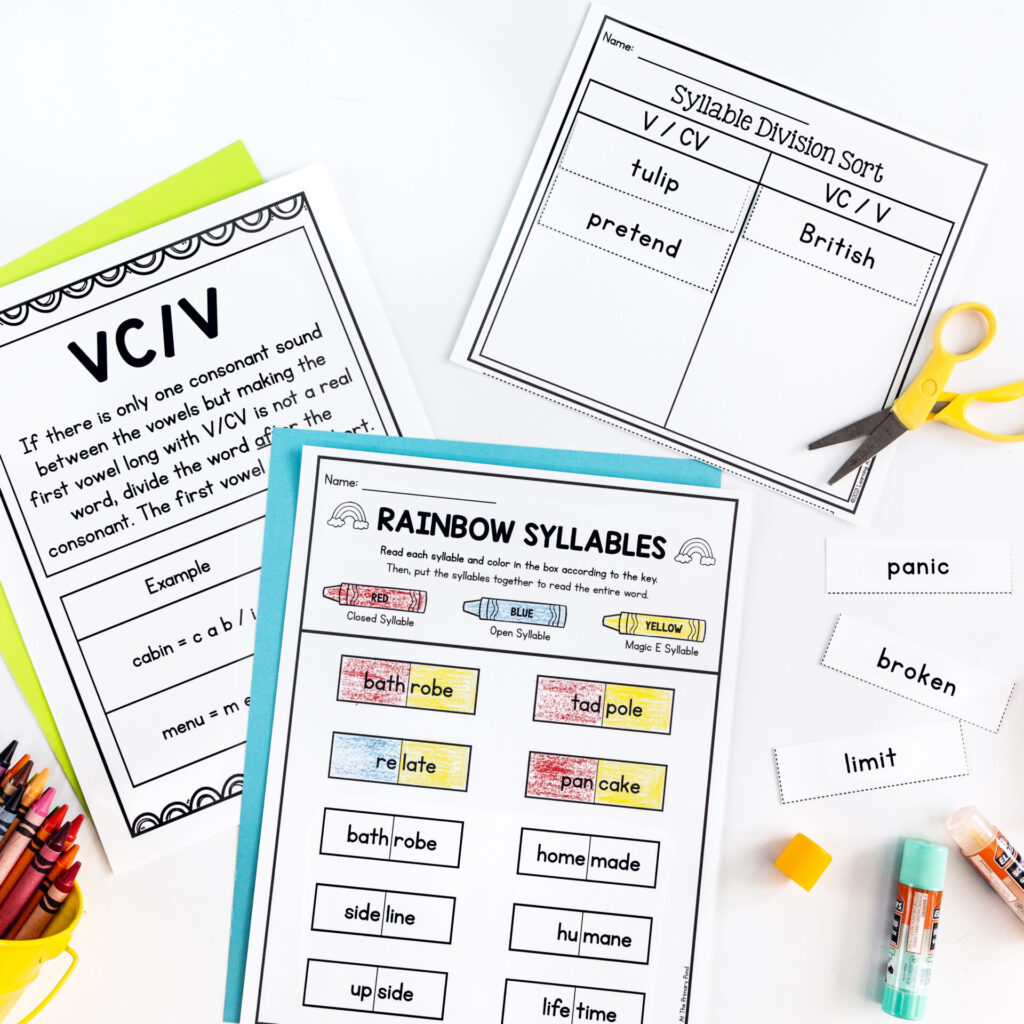
And, if you’re interested in learning more about teaching syllable types and syllable division rules, check out these other blog posts about syllable division!
So, what are you waiting for? Hop on over to my TPT store to get your copy today!
Happy teaching!
